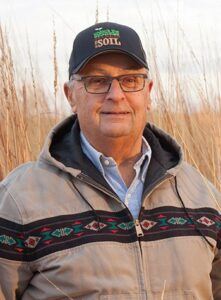As we head into a mid-term election year, the policies impacting agriculture are regularly in the headlines.
“Over the last few years, the words ‘farming,’ ‘agriculture’ and ‘rural America’ have been in the national media more so than at any other point in my lifetime,” says Kelsey Barnes, federal government relations manager at Syngenta. “Many U.S. farmers realize now more than ever how regulations and the political environment in Washington, D.C., impact their operations.”
But even with constant media coverage, it’s hard to keep up with the changes.
Keeping Stepped-Up Basis
To the relief of many farmers, stepped-up basis is no longer in imminent danger of elimination. As farms pass from generation to generation, land values tend to increase. With stepped-up basis, farms’ successors only pay capital gains taxes on property value increases since the land was inherited. Without stepped-up basis, they would pay taxes on the full increase in value since the time that the land was originally purchased by a relative.
“Eliminating stepped-up basis would make it nearly impossible for many family farms to continue,” Barnes says. “We hear a lot about protecting small family farms; but without stepped-up basis, many farmers would be forced to sell land in order to pay taxes.”
According to the U.S. Department of Agriculture’s (USDA’s) analysis, eliminating stepped-up basis would create a new tax burden for 17% of small farms, 66% of midsized farms, 80% of large farms and 96% of very large farm operations.
Eliminating stepped-up basis would make it nearly impossible for many family farms to continue. We hear a lot about protecting small family farms; but without stepped-up basis many farmers would be forced to sell land in order to pay taxes.
Needing Clarity About the Denial Decree
Mexico’s timelines or details around the phasing out of glyphosate are murky after publishing a decree banning its use as well as banning imports of genetically modified (GMO) corn by 2024. Follow-through on this decree could negatively impact American corn growers, as Mexico is a top export market for U.S. corn. Mexico demonstrated a committed anti-GMO stance recently when it rejected a new Bayer stacked corn trait, but a lack of clarity makes it hard for the U.S. agriculture industry to forecast or prepare for the transition.
“While there haven’t been further signals of how the transition will roll out, this development is not a promising sign for any companies, including Syngenta, that have biotech lined up,” Barnes says. “Even worse, if they were to ban all importation of GMO corn, we would likely see a rapid decline in the U.S. corn market, and Mexico would see a rapid increase in food prices.”
Connecting Rural America
In 2020, the Federal Communications Commission found that 18.3 million Americans lack access to broadband internet. Other research organizations put the number closer to 42 million. Rural communities may, however, see improvements soon. The Infrastructure Investment and Jobs Act allocates $65 billion to broadband infrastructure. Of this, $2 billion of this will go directly to the USDA’s ReConnect Program. This is in addition to Secretary of Agriculture Tom Vilsack’s late 2021 announcement opening applications for up to $1.15 billion in loans and grants for expanding the availability of broadband in rural areas through the ReConnect Program.
“This is a significant increase in rural broadband funding and can only positively impact our customers and employees,” Barnes says. “When farmers in rural America have access to quality internet, it’s easier for them to connect to products and resources that benefit their families and farms.”
Making an Impact
Syngenta is committed to advancing policies that improve the lives and operations of U.S. farmers. The Syngenta Corporation Employee Political Action Committee (Syngenta PAC) is an employee-based political action committee committed to taking proactive measures in government affairs. The Syngenta PAC is on the front lines advocating policy outcomes that will favorably impact individuals in the ag industry.
“The Syngenta Corporation Employee Political Action Committee is entirely funded by employees — not Syngenta as a company,” says Barnes. “These are employees who are contributing, because they believe in the importance of supporting policies and members of Congress who support their business interest, the agriculture industry and their growers.”
The Syngenta PAC supports candidates and members of Congress who promote the ag industry’s Freedom to Operate.
Available information around these policies is rapidly changing. Please note that the information included in this article is reflective of the status as of early December 2021.







